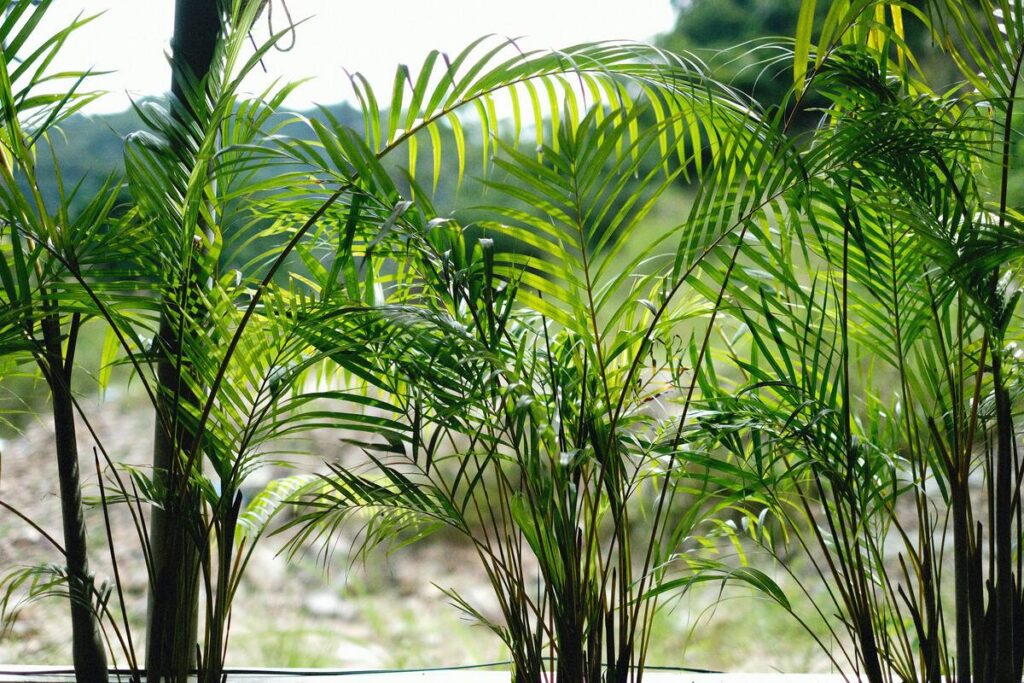The Power of Carbon-Absorbing Trees Inside Houses To Mitigate Climate Change and Indoor Pollution.

Carbon-absorbing trees inside homes.
In India, the idea of incorporating carbon-absorbing trees inside homes has attracted a lot of interest recently as a viable way to fight climate change and enhance indoor air quality. These indoor plants are decorative additions that also have the amazing capacity to absorb carbon dioxide and release oxygen. Integrating these trees into our living areas has become vital due to urbanization and a lack of available green space. The importance of indoor carbon-absorbing plants, their advantages, and appropriate tree species for Indian houses will all be covered in this article. We can foster healthier habitats and contribute to a greener future by adopting these eco-allies.
Importance of Carbon-Absorbing Trees
The potential of carbon-absorbing trees to enhance interior air quality and support a healthy living environment is crucial for homes. With numerous origins, including volatile organic compounds (VOCs) from household items, off-gassing from furniture, and external pollutants seeping indoors, indoor air pollution is a serious problem. The World Health Organisation (WHO) claims that indoor air pollution is a factor in respiratory conditions, allergies, and other health problems.
As well as formaldehyde, benzene, and xylene from indoor air, carbon-absorbing trees like the Areca Palm, Money Plant, Peace Lily, Rubber Plant, and Snake Plant can also absorb other dangerous chemicals. They serve as organic air purifiers, improving the quality of the air and lowering the likelihood of respiratory illnesses.
Studies have indicated that adding greenery indoors can improve cognitive performance, lower stress levels, and increase productivity, even if precise evidence on the effects of indoor carbon-absorbing plants may vary. Indoor trees are also linked to reduced blood pressure and a sense of well-being.
Overall, putting carbon-absorbing trees inside homes can help create a healthier interior climate, lower air pollution, and improve the residents’ general well-being.

Benefits of Indoor Carbon-Absorbing Trees
3.1 Improved Air Quality
Air quality is greatly improved by indoor carbon-absorbing trees. They serve as organic air filters, clearing the air of dangerous contaminants like formaldehyde, benzene, and xylene. These trees assist to enhance the air quality by absorbing these pollutants, which lowers the risk of allergies and respiratory problems.
3.2 Health Benefits
Indoor trees that absorb carbon offer many advantages to people’s health. Here are a few significant benefits:
- Better Respiratory Health: These trees help filter and remove airborne allergens and irritants by removing contaminants from the air. This can improve lung health by easing respiratory conditions including asthma and allergies.
- Stress Reduction: Indoor greenery, especially trees that absorb carbon, has been related to lowered levels of stress and enhanced mental health. Indoor plants can help to create a serene and tranquil atmosphere that improves mood and lowers stress levels.
- Improved Cognitive Function: Research indicates that being near nature, even indoor trees, can improve cognition, focus, and memory. In offices and classrooms, this can be especially helpful.
- Increased Sleep Quality: Indoor trees filter the air and release oxygen, which results in a fresh and restorative atmosphere. This may improve the quality of your sleep and aid you with sleep-related problems.
- Psychological Well-Being: Studies have shown that having indoor plants has a good psychological impact on people’s moods, reducing anxiety, and enhancing psychological well-being in general.
People can enjoy these health advantages by including carbon-absorbing plants indoors, creating a more cosy and caring living or working environment.
Suitable Carbon-Absorbing Trees for Indoors
4.1 Areca Palm (Dypsis lutescens)

An great option for indoor spaces as a carbon-absorbing tree is the areca palm (Dypsis lutescens). It has ethereal, airy fronds that provide any space a hint of tropical charm. The Areca Palm improves indoor air quality by efficiently removing pollutants like formaldehyde, benzene, and xylene from the air in addition to its visual appeal. It benefits from strong indirect light and needs regular watering to maintain moist soil. The Areca Palm is a well-liked option for indoor greenery because of its air-purifying properties and low maintenance needs.
4.2 Money Plant (Epipremnum aureum)

Devil’s Ivy, often known as the Money Plant (Epipremnum aureum), is a carbon-absorbing tree that is appropriate for interior settings. It adds beauty to any area with its trailing vines and heart-shaped leaves. Formaldehyde, benzene, and xylene are just a few of the pollutants that the Money Plant is good at filtering out of the air. It is a low-maintenance plant that grows well in a range of indirect lighting levels, from dim to bright. The Money Plant should be maintained indoors with regular watering and well-draining soil.
4.3 Peace Lily (Spathiphyllum)

As a carbon-absorbing tree, the peace lily (Spathiphyllum) is a preferred option for interior settings. It adds a touch of charm to any space with its graceful white blossoms and glossy green leaves. Effectively eliminates benzene and trichloroethylene from the air thanks to the Peace Lily. It prefers constantly moist soil and does well in low to moderate light settings. The Peace Lily is a great option for indoor settings, especially bedrooms and living rooms, because of its air-purifying characteristics and tolerance for low-light environments.
4.4 Rubber Plant (Ficus elastica)

A suitable carbon-absorbing tree for indoor situations is the rubber plant (Ficus elastica). It adds visual appeal to any indoor environment with its substantial, glossy foliage and lovely burgundy tones. In order to promote a healthier indoor environment, the Rubber Plant is renowned for its capacity to remove pollutants from the air, such as formaldehyde. It needs regular watering, allowing the soil to partially dry out in between waterings, and does best in strong indirect sun. The Rubber Plant is a well-liked option for indoor greenery because of its ability to filter the air and low maintenance requirements.




